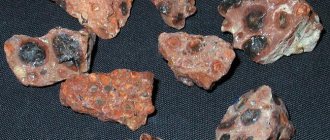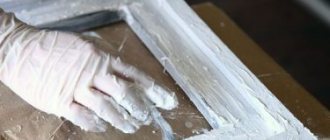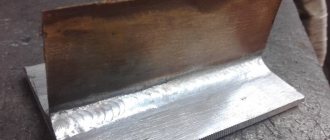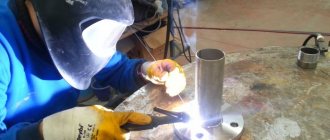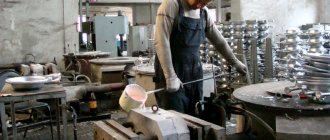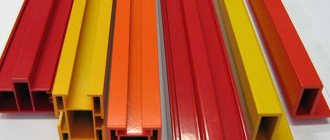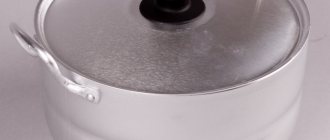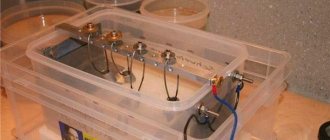Medieval scientists who comprehended alchemy, from its very inception, sought to learn the secret of creating the philosopher's stone, an artifact capable of transforming any metal into real gold. We spent so much time searching, tested so many technologies, but the technology was not discovered. But alchemy was able to advance science with its research, and also give rise to such a modern scientific discipline as chemistry. Instead of its great-grandmother alchemy, chemistry today offers us the chance to follow an equally attractive path of enrichment. Today we will look at the chemical technology that allows the extraction of aluminum from clay.
Technology
The key to achieving a comfortable and prosperous life was literally under your feet all this time. Today we will talk about the so-called bauxite clay. This is a very common raw material. It contains a significant percentage of aluminum, which, for complete happiness, can only be obtained from bauxite using the technology described here. This material can be found in many places. For example, it hides under a layer of soil in various pits, along the banks of rivers, lakes and generally near bodies of water.
To tell the truth, you won’t be satisfied with raw materials alone, of course. More space will be required. The ideal option, of course, would be the area of the factory premises in order to immediately gain the ability to produce a large-scale turnover of the extracted goods, but in the beginning an ordinary garage will do. We will achieve the results we need using electric current.
A method for producing aluminum from clays, bauxite, etc. Soviet patent 1932 according to IPC C01F7/34
The invention relates to methods for chlorination of aluminum from clay, bauxite, etc. by deposition of aluminum with an electrolyte
from solutions of its salts. According to the proposed method, solutions of salts of precipitated metals in liquids that are not decomposed by these metals at the time of their isolation (for example, glycerin, acetone, etc.) are used as an electrolyte. The invention provides for the use of aluminum compounds, unrefined from iron, as an electrolyte, and solvent - substances that do not dissolve iron compounds (glycerin, alkaline solutions of aluminates, etc.) The drawing shows a vertical section of a bath used to produce aluminum electrically.
The decomposition of clay is carried out by the decomposition of aluminum silicate clay with sulfuric acid. To do this, the crushed clay is doused with excess sulfuric acid, then water is added, the mixture is mixed and left alone. The settled silica precipitates in the form of high-purity sand (suitable for the production of optical glass), and the solution containing aluminum sulfate, iron sulfate and the remainder of free sulfuric acid is filtered
and is poured into tanks for iron removal, which is done in one of four ways.
Option 1. The remainder of the sulfuric acid is neutralized by adding slaked lime and liver sulfur (sodium sulfide, potassium or ammonium) is added to the solution in the form of a weak aqueous solution, in an amount equivalent to the iron contained in the solution, determined for each load in the laboratory. Under these conditions, sulfur alkalis react primarily with iron salts, precipitating iron sulfide and, as a result, do not have time to react with aluminum salts. Thus, with the addition of an equivalent amount of sulfur liver, all the iron contained in the solution is precipitated into sulfur dioxide and is removed by settling and filtering.
Option 2. Liver sulfur is added in an amount arbitrarily greater than the equivalent of iron to the free acid solution of iron and aluminum sulfate. In this case, the excess of sulfuric liver precipitates part of the alumina, which is again transferred into solution at the end of precipitation by the slow addition of dilute sulfuric or hydrochloric acid or a solution of bisulfite, which has a weak effect on iron sulfide,
sodium, or other acids or salts, removed at the end of the reaction in weak solvent solutions by hydrogenation and filtration) of alumina, but not active or
Option 3. , Ammonia is added to the solution of aluminum and iron sulfate, which precipitates iron oxides and alumina:
Al, (504)3 -f 6 NHi OH 2 Al (OH)3 + 3 (NH.), SOjFa SO4 + 2,NH4 OH Fe (OH)2 -f (NH4)2 SO4 Fe (504)3 + 6 NH4 OH 2 Fe (OH)3-b 3 (NH4)2 SO
The precipitate is separated by settling and filtering or treated with a hot solution of sodium hydroxide (or potassium), which dissolves alumina:
A1 (OH)3-f Na OH A1 (Na O)3 + 3 H, O, while iron remains in the sediment.
From the resulting solution of sodium aluminate, alumina is precipitated by the action of carbon dioxide, which causes the formation of cold water, or by natural decomposition into alumina and caustic soda (caused by the addition of freshly precipitated alumina). In the first case, soda, by the action of lime, is also converted into caustic soda, which is again used to dissolve alumina. The first filtrate (ammonium sulfate solution), treated with slaked lime, decomposes into gypsum and ammonia, going
,AB (5O4)3 + b Ca (OH)2 3 Ca 504 + AB , 3 Ca O + 6 Na O
Fa 5O4-b Ca (OH)2-Ca SO4 + Fe (OH)2 Fe2 (3O4)3-f 3 CaCHOH)2 3 Ca 5O4 + 2 Fa (OHJ3.
The filtered precipitate of all the listed substances is treated with a solution of soda tijfi.K Glauber's salt: ,
Ala Oz. 3 Ca O + 3 Na2 CO3 or 3 Na2 50 2 AI (Na O)3 + 3 Ca CO3 or 3 Ca SO;
in this case, iron and gypsum remain in the sediment with lime carbonate, and the sodium aluminate solution is drained and decomposed by the action of carbon dioxide on the soda solution and alumina, and the salt solution is again used to process calcium aluminate.
The first two options result in a purified solution of aluminum sulfate, from which alumina can be obtained, for example, by evaporation and calcination of the sulfate salt or precipitation with ammonia, as indicated in the description of option 3. The last two options immediately yield alumina, which can be processed into pure alumina for the precipitation of oxides. The first part of this process can also be used to obtain alumina from a solution of aluminum sulfate purified by sulfurous alkalis. In this case, pure alumina is precipitated with ammonia and separated by filtration; ammonia is regenerated by lime, etc.V
Option 4. A solution of aluminum and iron sulfate is mixed with milk of lime, which precipitates iron hydrates, gypsum and calcium aluminate. ,
no salt or directly primaven to obtain aluminum. To directly obtain other pure aluminum salts, sulfuric acid for treating clay can be lured with another acid; for example, to directly obtain aluminum chloride from glyva, the latter can be treated with hydrochloric acid and the resulting solution can be purified from iron impurities with sulfurous alkalis.
In addition to clay, bauxite and other aluminum-containing minerals can be processed using the same method, although it is most advantageous to process the proposed
This method is called clay, since it does not require crushing, quickly dissolves in acids and is not associated with a specific deposit, like bauxite and other minerals.
Using the proposed method, aluminum can be obtained from a solution of aluminum salt by wet electrolysis. This method of electrolysis is based on the phenomenon that the most electronegative metals can be isolated in completely pure form from non-aqueous solutions, i.e. solutions of the decomposed salt in liquids that do not interact with free cathyrns at the time of isolation, such as glycerin, glycol and other monohydric alcohols, acetone and other similar ketones, acetic acid and other amyls.
To bring the electrolysis conditions as close as possible: such solutions to the conditions of water electrolysis, the baths are heated. This achieves an increase in the solubility of salts and, therefore, facilitating the ability to maintain high concentrations of solutions, a decrease in the viscosity of solvents such as glycerol, and an increase in electrical conductivity, which occurs both from an increase in the concentration of salts and directly from an increase in temperature.
The production of metals from solutions of their compounds by this method (electrolysis with insoluble anodes) is carried out in a bath with a porous partition, and, in the case of the release of anions interacting with the solvent, only the cathode space is filled with a solution of the decomposing salt in the appropriate solvent; the anode is filled with an aqueous solution of the product released at the anode, to which neutral salts or acids can be added to increase electrical conductivity.
Electrolysis is carried out in a bath, schematically shown in the drawing. The current is supplied to a cathode, which is an aluminum or copper sheet, and to a lead, carbon or magnetite anode 5. The cathode / and anode 2 spaces are separated by a porous partition 3, with the catholyte being a solution of decomposing aluminum salt in the specified solvents, and the anolyte being jet-water with an admixture of some neutral salts, or other liquid that is not decomposed by free anions. Continuous saturation with salts, heating and mixing of the catholt is achieved by circulating the solution through 6 and 9 pipes through a heated large tank, at the bottom of which there is always an excess of aluminum salt. Sulfuric acid, chlorine or any other anode product formed on the surface of the anode 5 is discharged through pipes 8 located so that they capture the scrap liquid closest to the anode, i.e. the most concentrated anolyte solution is removed. To maintain a constant level in the anode space 2, water is continuously supplied through pipe 7.
Aluminum cathodes, upon reaching a certain thickness, are remelted, while copper cathodes, correspondingly oxidized on the surface, allow easy removal of the aluminum layer. Thus, this method makes it possible to directly obtain aluminum sheets. A solution of aluminum sulfate and alumina (dissolved in alkali solutions in glycerin) undergoes electrolysis. Alminium chloride, a double salt of aluminum cyanide and potassium, obtained by dissolving alumina in a solution of potassium cyanide, calcium aluminate, obtained directly by leaching with glycerin the precipitate of gypsum, iron oxides and aluminate.
By using a suitable electrolysis solvent, the process of removing iron from aluminum compounds can be eliminated. To do this, the said solvent must dissolve certain aluminum salts, but not dissolve the same iron salts. For example, for aluminum and iron sulfate, such solvents are amyl acetate, glycerin, for aluminum oxide and iron, an alkaline solution of sodium adjuminate in glycerin, etc.
When using such solvents, the production of aluminum is greatly simplified, since the process consists of only two operations: treating the clay with acid, draining the solution and evaporating it, or precipitating impure alumina and dissolving the resulting salt
/ ,
solvent and elecv corresponding to the trolysis solution.
Subject of the invention.
1. A method for producing aluminum from clays, bauxite, etc. by precipitating aluminum from solutions of aluminum salts by electrolysis, characterized in that solutions of salts of precipitated metals in liquids that are not decomposed by these metals at the time of their isolation are used as an electrolyte, for example , glycerin or acetone, etc., wherein, in the case of the release of anions interacting with the electrolyte during electrolysis with insoluble anodes, the bath is separated by a porous partition and a solution of the anodic product in water or another liquid that is not decomposed by free anions is used as an anlyte, and as a catholyte - a solution of aluminum salt in the indicated solvents.
2. An electrolytic method for producing aluminum according to claim 1, characterized in that aluminum compounds not found from iron are used as an electrolyte, and substances that do not dissolve iron compounds, such as glycerin, alkaline solutions of aluminates, are used as a solvent and so on,
Required Components
Here's a list of things:
- graphite powder
- metal barrel
- welding machine
- concrete mixer
- bauxite clay
Today, the above, with the exception of bauxite, can easily be found among hardware markets and building materials stores. So let's move on from idle theorizing to the practice of this technology. True, to start you need to find a place where you will get the required raw materials. Drive a car there that can transport loads weighing half a ton. This is exactly the amount of bauxite to be collected. There is no point in taking less than five centners. When stacking bauxite, consider your strength. Now take what you have collected.
Bauxite, alumina and recycling. How and from what is aluminum produced?
Against the background of news about the coup in Guinea, the world's second supplier of raw materials for aluminum, it is worth refreshing information about how this metal is produced and which countries play a key role in this market.
The aluminum production chain is as follows:
Bauxite mining
There are several types of aluminum ores in the world, but bauxite is the main raw material for production. This rock is mined primarily by open-pit mining using powerful quarry equipment. About 90% of the world's bauxite reserves are found in tropical countries, with 70% in 5 countries: Guinea, Australia, Vietnam, Brazil and Jamaica.
The largest producers of bauxite are Australia, Guinea and China: 67% of all world production is concentrated there.
Alumina production
The mined bauxites are crushed, treated with an alkaline solution, and alumina is isolated from them - aluminum oxide Al2O3. Bauxite typically contains between 40% and 60% alumina. The resulting alumina is a key raw material in the aluminum electrolysis process. From one ton of alumina, on average, 0.5 tons of pure aluminum are obtained.
Electrolysis and smelting of primary aluminum
When exposed to electric current, the bond between the aluminum and oxygen atoms in alumina breaks down. Aluminum is deposited at the bottom of a special electrolysis bath, and oxygen combines with carbon contained in the anode blocks to form carbon dioxide. When producing one ton of aluminum, 280 thousand cubic meters of gas are released.
Aluminum production requires a very large amount of electricity, which is why metallurgical holdings often include generating assets. In light of the popular ESG trend in recent years, when assessing how “green” aluminum is, it is common to evaluate CO2 emissions from associated electricity generation.
In Russia, according to the Aluminum Site portal, about 95% of aluminum capacity is provided by relatively clean hydroelectric generation. The RUSAL company even offers its customers a special grade of aluminum with a low carbon footprint under the trademark “ALLOW”. The total CO2 emissions from producing 1 ton of such aluminum are only about 4 tons.
One of the revolutionary technologies in aluminum production is the use of an inert anode in electrolysis. In this case, the oxygen released from alumina does not combine with carbon and practically no CO2 emissions are formed. In 2022, RUSAL began test deliveries of aluminum produced using this technology.
The largest aluminum producing companies in the world
Manufacturing of final products
After electrolysis, remaining impurities from aluminum are removed by remelting. Ingots are cast from the finished primary aluminum, which will subsequently be used for the manufacture of final products.
Rectangular ingots are called slabs. They are used for rolling into thin sheets and producing aluminum foil, beverage cans, automobile bodies, etc.
Cylindrical ingots of aluminum are used for extrusion - extrusion through a hole of the required shape. This is how most aluminum products are made.
During the production of products, various additives can be introduced into aluminum to produce alloys that have the necessary qualities. Over 100 different grades of aluminum alloys are used in industry.
According to statista.com, the Asian region accounts for about 78% of all aluminum consumption. For the European region - just over 11%, for the USA and Latin America - 9%.
Recycling
Aluminum, unlike steel and some other metals, is not subject to corrosion and does not lose its properties during use. Products made from it can be melted down and recycled into new products - recycling.
In developed countries, the share of processing in the production of final products is quite high and, according to all forecasts, will continue to grow. According to the information publication Aluminum Herald, in the European Union the share of recycled materials in the automotive industry and construction reaches 90–95%, in aluminum cans - 74%, and in packaging in general - 60%.
More than 600 thousand aluminum scrap is collected and processed in Russia. In cast products the share of recycled materials is 59%, in extrusion - 39%, in rolled products - 15%.
BCS World of Investments
Extraction process
1. As soon as you bring the bauxite, you will need to dry it. You can spread newspapers and lay out the collected early raw materials. After that, take the most ordinary hair dryer. Use it to dry. Of course, it is much preferable to use some serious drying unit for this purpose. When the weather is sunny, drying can be done outside. However, it is worth remembering that you need to make sure that the dried clay does not dry to anything. To do this, the surface can be sprinkled with flour or sand, depending on what you have at hand.
2. Now is the time to grab a concrete mixer! Using a concrete mixer, grind the dried early. Using a concrete mixer, you need to bring it to the state of sand or even dust, since it is much faster and much less expensive to obtain metal with small crumbs than with large pieces. This principle has been known to chemistry for a long time. For those who do not have a concrete mixer, a simple hammer will be a real salvation. True, it will take a lot of effort to process a whole heap weighing five hundred kilograms. Therefore, it is worth thinking about purchasing a concrete mixer later.
3. It's time to take the graphite powder you bought. Today it will be needed in order to avoid a fire hazard. Next we have to deal with electric current. The resistance of raw materials to electric current passing through it greatly increases the risk of fire. Ordinary graphite powder, on the contrary, reduces resistance and helps control temperature regulation. With its help, it will be much safer to extract from clay. Make a graphite mixture.
4. The main stage comes. Get out your metal barrel. Place the mixture of powders you obtained in the previous step there. Open the tap and fill the mixture in the metal barrel with water. The mixture must be moistened so that the electric current sent through the barrel can freely pass through. Also, with the help of water, we can significantly speed up the process of extracting aluminum from a mixture of powders.
5. The next step is the most important one. Finally, we use electricity using a welding machine. It is imperative to take precautions! Of course, you should wear rubber gloves and boots. This way, avoid possible burns from the electric current of the welding machine. Following normal safety precautions, connect the welding machine to the metal drum. It is worth waiting fifteen to thirty seconds while the electricity passes through the metal barrel. During this time, oxygen from heating by electric current will leave the powder along with water. Remove the welding machine.
Aluminum: "silver" from clay
In 1855, at the World Exhibition in Paris, several small ingots and thin strips of silver-white metal lay next to the products of the Sèvres porcelain factory.
These were pieces of the first aluminum, which was then called “silver from clay.” It was valued on a par with gold and platinum. French Emperor Napoleon III and the entire royal family used aluminum spoons at dinner. The name of the metal was given by the German chemist Wöhler, who developed a method for producing this metal in the form of small granules or grains. The word "aluminum" comes from the Greek "alumene", which means "astringent" or "alum". According to the testimony of the ancient Greek historian Herodotus, back in the 5th century. BC (and possibly earlier), when dyeing woolen fabrics, a mineral called alumene was used as a mordant. Alums were also familiar to Russian artisans, who in the XIII-XIX centuries. they were used for dyeing fabrics and making morocco. Alum land in the 18th century. Russian chemists called it alumina.
Aluminum
- the most common metal. In terms of content in the earth's crust (7.45%), it ranks third among all chemical elements. There are over 250 minerals that contain aluminum. Most of the aluminum minerals that make up rocks are aluminosilicates, i.e. compounds of aluminum with oxygen and silicon.
Aluminosilicates were destined to play an extremely important role in the development of civilization, but an even more important material turned out to be the weathering products of aluminosilicates - clay. They owe their origin to ancient pottery, modern artistic and technical porcelain, and the main building material - brick.
Precious stones are also aluminum compounds containing some impurities. The basis of ruby, or aluminum oxide, is corundum with a slight admixture of chromium. Sapphire is the same corundum, but instead of chromium it contains titanium. Bluish-green aquamarines owe their origin to beryllium aluminosilicate. Turquoise is a copper aluminosilicate; dark red garnets are crystals of ferrous aluminum; delicate leucosapphires are transparent crystals of anhydrous aluminum oxide.
Of the numerous aluminum minerals found in nature, only a few can be used for industrial aluminum production. The main raw material for its production is alumina (aluminum oxide), which is part of minerals (boehmite, diaspores, hydrargylite), clays, mica, feldspars, bauxites. The latter got their name from the village of Box in the south of France, where in 1821 large deposits of a brownish-red rock were discovered, similar in appearance to clay, but lacking plasticity. Analysis of the rock showed that it contains up to 60% alumina with an admixture of iron and silicon oxides and other substances.
The first aluminum products, which appeared in France in the mid-60s of the last century, were so expensive that they almost never found a consumer. The cost of 1 kg of aluminum exceeded 1000 gold rubles. But by the end of the 60s, after the French chemist Deville organized the production of aluminum metal from aluminum chloride, it decreased by almost 10 times.
However, Deville's method, based on the displacement of aluminum by molten “metallic” sodium, was expensive, complicated and did not make it possible to obtain pure metal. The search for more advanced methods for producing aluminum gave scientists the idea of using Greenland cryolite as a raw material, which, starting in 1854, began to be imported into Europe in large quantities. Since the mineral is a double salt (aluminum and sodium fluoride), one could hope to obtain aluminum metal by reducing cryolite, as well as aluminum chloride, with sodium metal.
The most effective method for producing aluminum from cryolite was proposed by the Russian scientist N. N. Beketov, then a professor at Kharkov University. Two years after Beketov’s message, aluminum smelters in France and Germany began to operate using his method.
The Soviet Union has the richest deposits of bauxite in the Urals, the Bashkir Autonomous Soviet Socialist Republic, and Kazakhstan. Back in 1882, A.E. Brenn discovered bauxite deposits in the area of the Volozhba River, not far from the city of Tikhvin (now Leningrad region). Tsarist officials did not pay attention to Brenn's message, and aluminum continued to be imported from abroad. Only in 1915, due to the sharply increased demand for aluminum for military purposes, an intensified search for aluminum ores in the country began. The military department even announced a large cash prize (50 thousand rubles) to the one “who will indicate the bauxite deposit.” Geologists, local historians, and prospectors responded to the government’s call. A year later, engineer P. N. Timofeev established the presence of a significant bauxite deposit in the Tikhvin region, which during the Soviet years became the main ore base of the aluminum industry. In 1931, in the area of the city of Serov in the Northern Urals, bauxites even better than Tikhvin's were found, and somewhat later large deposits of alumina-rich bauxites were discovered in other areas of the Urals.
At the end of 1916, V. A. Arshinov proposed using nepheline ores, which our country is so immensely rich in, to produce aluminum. The largest nepheline deposits are located in the Khibiny massif (Kola Peninsula), in the Krasnoyarsk Territory and Kemerovo region.
The first production of aluminum from nepheline ore took place at the Khibiny deposit, explored in 1921 by a geological expedition led by Academician A.E. Fersman. Production was organized as follows. 21 kg of powdered “ice stone” and 3 kg of pure magnesium were poured into pomegranate crucibles. The crucibles were tightly closed and placed in a coke oven, where they were heated to white heat. After an hour and a half, the crucibles were removed from the furnace and cooled. Pieces of aluminum released from the solidified mass were melted into ingots in a small graphite crucible.
While studying the processes of displacement of metals from their salts, Beketov noticed that aluminum is completely displaced from cryolite by metallic magnesium. “Clay (aluminum) is reduced by magnesium,” he wrote in his doctoral dissertation, “from its fluoride compound (from cryolite, artificially prepared by me), as I was convinced of by special experience.”
These observations served as the basis for the creation of an industrial method for producing aluminum, and this method was used in Europe for more than 25 years. Only in the 90s of the last century, after K.I. Bayer proposed producing aluminum from cheaper alumina in St. Petersburg at the Tentelevsky Chemical Plant, the Beketov method lost its industrial significance.
While developing a method for producing pure alumina hydrate for mordant of calico fabrics, Bayer made two important discoveries, which then formed the basis of his method for producing aluminum. He noticed that a solution of sodium aluminate in the presence of a seed of freshly precipitated alumina hydrate spontaneously decomposed to release alumina and that alumina could be extracted from bauxite by treating it with an alkali under pressure. Bayer's method of producing pure alumina is still used today.
Five years after Bayer published his patents, engineer D. A. Penyakov patented another method for producing alumina from bauxite. He replaced expensive alkalis - soda ash and caustic soda - with Glauber's salt. A mixture of finely ground bauxite, Glauber's salt and coal was sintered in a tubular rotary kiln at 1200 ° C. Sodium aluminate was leached from the snack with water, then the aluminate solution was carbonized (by blowing carbon monoxide through it), as a result of which aluminum hydroxide precipitated, and in solution there was soda left. The sulfur dioxide released during sintering of the mixture was used to obtain new portions of Glauber's salt and hydrochloric acid from table salt.
Penyakov's method did not find application in Russia, but was immediately used abroad. An alumina refinery was built in Belgium, which operated until 1914, when it was destroyed by German troops who occupied the country.
A particularly valuable contribution to the development of aluminum production was made by Russian scientists V.P. Ilyinsky and P.P. Fedotiev, who created the theory of electrometallurgy of aluminum, the theory of the processes occurring when this metal is extracted from ores using electric current. In 1912, Fedotiev’s book “Experimental Research on the Electrometallurgy of Aluminum” was published, which was immediately translated into many foreign languages and became a reference book for metallurgists around the world.
The industrial methods for producing aluminum developed by Russian scientists could not find practical application in Tsarist Russia, although the government from the very beginning of the First World War strongly encouraged the exploration of aluminum ores and tried to organize the aluminum industry. But this was hampered by the lack of the required amount of electricity - the basis of aluminum electrometallurgy. This endeavor was also hindered by foreign concerns that sold aluminum to Russia and did not want to lose their profits.
Only under Soviet power were the prerequisites created for the development of the domestic aluminum industry. The country's electrification plan (GOELRO) developed by V.I. Lenin played a decisive role here. In 1925, the firstborn of this plan - the Volkhov hydroelectric power station - generated electricity and a few years later became the energy base of the Volkhov aluminum smelter. Another seven years passed, and the Dneproges began to supply electricity to the second aluminum plant in the Union - Dneprovsky. At the end of 1934, construction began on a large aluminum plant in the Urals.
In 1940, a decision was made to intensify the development of the aluminum industry; construction of alumina and aluminum plants was planned in the Urals, Kuzbass, Transcaucasia, Murmansk region, and Karelia.
An aluminum smelter is completely different from ordinary metallurgical plants, where iron ore is extracted from iron ore and smelted into steel. The heart of an aluminum smelter is the electrolysis shop. Along the wide spans, large iron boxes—electrolysis baths—are installed in several rows on a stone foundation. They are lined inside with graphite or carbon plates, which serve as cathodes. Massive carbon plates - anodes - are lowered into the baths from above. Electrolysis baths are filled with aluminum oxide with the addition of a small amount of cryolite, which reduces the melting point. When the current is turned on, the cryolite begins to melt and dissolves the aluminum oxide.
Electrolysis is carried out at a temperature of about 1000 ° C. Oxygen is released at the anode, which oxidizes the coal into carbon monoxide. At the bottom of the bath, at the cathode, molten aluminum collects. Each bath produces several hundred kilograms of metal per day.
In the 60s, Soviet metallurgists won an outstanding victory: for the first time, aluminum was produced from nephelines at the Volkhov Aluminum Plant. And just recently, the world’s largest Achinsk plant, built on the basis of the Kilshaltyr nepheline deposit, came into operation.
The waste resulting from the flotation of apatite ores and their processing into fertilizers is called nepheline tailings. Before obtaining aluminum from tailings, they must be enriched to obtain a concentrate containing at least 30% alumina. Nepheline concentrate can produce twice as much aluminum as bauxite, but it is much more difficult to extract the metal from the concentrate than from bauxite. Here, high temperature and chemical reactions came to the aid of metallurgists.
The nepheline concentrate is crushed into small pieces and mixed with crushed limestone. The mixture, moistened with water, is ground in mills and the resulting slurry, pulp, is loaded into a rotating kiln - a long (60-180 m) iron drum. The pulp enters the drum from the cold end, and a stream of finely ground burning coal moves towards it from the other end, the temperature of which reaches 1300-1500 ° C. First, the water evaporates, then the limestone decomposes into calcium oxide and carbon dioxide; the latter is sucked out of the furnace.
Lime molecules react with nepheline molecules and destroy them. A sinter is formed - a dense mass consisting mainly of calcium silicate and sodium and potassium aluminates. They eagerly combine with silica molecules. At the same time, aluminum oxide reacts with potassium and sodium oxides and turns into aluminates of these metals.
The cake is cooled to 100° C and ground in mills into powder, which is then poured into large vats and filled with soda solution. Sodium and potassium aluminates dissolve in soda, and calcium silicate remains at the bottom of the vat. Aluminate solutions are separated from the sediment in special apparatus. The sediment is washed and sent to a workshop where cement is prepared from it.
Purified solutions of aluminates are pumped into carbonizers and treated with carbon dioxide. Aluminum oxide hydrate precipitates - a white fluffy powder, and potash and soda remain in the solution. Alumina hydrate is calcined in rotary kilns, where it loses water and turns into alumina. Soda and potash are again used to dissolve the aluminum compounds contained in nepheline.
The extraction of aluminum oxide from nepheline tailings expands the raw material base for metal production. In our country, the reserves of nepheline ores are many times greater than the reserves of bauxite.
Result
Don't rush to take the metal from the barrel! He is now very hot from the contact welding machine. It’s worth going to rest and letting the metal cool. Usually three hours is more than enough for a heated metal barrel to cool down. Half a ton of raw material usually yields a quarter ton of aluminum. The metal obtained from bauxite, of course, is unlikely to be as pure as it is obtained at special ore purification plants. As a result, we will end up with a certain mixture in which the share of aluminum will be from 80% to approximately 90%. Such purity is enough to take what you receive to the nearest point where they accept non-ferrous metals and get money for it. True, of course, no one will pay the full price there, but even under this condition, it’s possible to earn about a hundred thousand rubles in a month.
The technology of chemistry that was literally on the surface is now known. In general, think about it. Are you ready to take the risk or is the usual boring everyday routine of official employment more pleasant for you than the new prospect that has opened up? Decide.
Study of the process of aluminum leaching from kaolin clays of the Angren deposit
Aluminosilicates, i.e. kaolinite , montmorillonite clays, alunites and other minerals are very valuable raw materials in the production of refractories, ceramics and are used to produce paper, aluminum sulfate, alumina and other chemicals.
Of the aluminosilicates, kaolins, alunites, nephelines, bauxites, and montmorillonites are of great economic importance. They are used in aluminum production; porcelain, expanded clay, pottery, souvenirs, sand-lime bricks, benthic powder, etc. are made from them.
Kaolins belong to the group of monomineral clays. Clays differ from kaolins in their higher dispersion of kaolinite particles, greater plasticity, ability to sinter at high temperatures, and contain more than 50% of the kaolinite mineral – Al2Si2O5(OH)4. Particles smaller than 2 microns predominate in clays, while particles smaller than 5 microns predominate in kaolins.
Two large kaolin deposits have been explored in Uzbekistan – Angrenskoye in the Tashkent region and Alliance in the Samarkand regions [2, 5].
However, kaolinite clays due to their low aluminum content (Al2O3 = 13-25%), high iron content (Fe2O3 = 1.5-6.0% sometimes up to 12%) and silicon oxide (30-80%) are currently are not processed. On the outskirts of the city of Angren there are more than 0.45 billion tons of gray secondary kaolins, composition Al2O3 = 19-25%; Fe2O3 = 1.5-4.5%; SiO2 = 40-58%, etc.
Aluminum raw materials are diverse, have a composition unique to them, and differ in crystal structure, as a result of which they differ in the yield of the main substance during acid-base processing. Therefore, it is necessary for each type of raw material to carry out separate scientific and technological approaches and select the most suitable processing methods. Technologies known in world practice are not acceptable for processing kaolin clays from the Angren deposit.
Acid methods for processing aluminum-containing raw materials involve a pre-firing stage to convert aluminosilicates into a more acid-soluble form.
Interest in nitric acid stripping of aluminum-containing raw materials is associated with the ease of acid regeneration by thermal hydrolysis. When opening uncalcined argillite and bauxite with 40% acid, the degree of extraction does not exceed 35-54%, respectively. The use of pre-firing at a temperature of 650-7500C for 3 hours makes it possible to increase the degree of aluminum extraction to 81.6 and 98.32%, respectively [1].
The degree of extraction of aluminum oxide from Vladimir kaolins with 20% H2SO4 does not exceed 2-3% [6]. With increasing firing temperature, highly active metakaolinite is formed, which is easily decomposed by sulfuric acid according to the reaction:
Al2O3 2SiO2 + 3H2SO4 = Al2(SO4)3 + 2SiO2+ 3H2O (1)
As a result, the degree of extraction of aluminum oxide into the solution sharply increases to 90%. With an increase in the firing temperature to 8500C and especially to 9000C, the extraction of aluminum into the solution decreases, which is explained by the formation of y-Al2O3 and mullite, which are sparingly soluble in sulfuric acid [4]. Silica dissolves slightly in H2SO4 solutions, and its content in the sulfate solution is low (0.1-0.2 g/dm3).
Aluminum sulfate is the most effective and widely used coagulant, which is widely used in industry for the purification of industrial and waste waters, water treatment, in the pulp and paper industry, leather tanning, and textile dyeing [3]. However, despite the presence of a powerful raw material base for the production of coagulants based on aluminum salts, they are not produced in the Republic and are imported in larger quantities from abroad.
Therefore, research aimed at processing existing kaolin clays to produce a coagulant - aluminum sulfate - is relevant.
In order to process kaolin clays from the Angren deposit into aluminum sulfate, the influence of the duration of the heat treatment process of kaolin clays, the rate and concentration of sulfuric acid, temperature, and the duration of the process of decomposition of kaolin with sulfuric acid solutions on the degree of extraction of aluminum oxide into the solution was studied.
For research we used kaolin clays from the Angren deposit containing (wt. %): Al2O3 = 21.73; Fe2O3 = 1.68; SiO2 = 65.2; TiO2 = 0.4; CaO = 0.4; MgO = 0.65; R2O = 0.8; SO3 = 0.6; p.p.p. = 8.5.
Figure 1 shows the effect of the duration of calcination at a temperature of 650°C on the degree of extraction of aluminum and iron oxides into a solution of 60% sulfuric acid at a rate of 100%.
The figure shows that with an increase in the calcination duration from 30 min to 300 min, the degree of aluminum extraction increases from 56.5% to 96.1%, while the degree of iron extraction is 81.8%. Increasing the calcination duration beyond 1 hour has virtually no effect on the degree of extraction of aluminum and iron oxides.
Further research was aimed at studying the influence of technological parameters on the degree of extraction of aluminum and iron oxides from calcined kaolin clays of the Angren deposit.
The effect of sulfuric acid concentration was studied at 100% norm, temperature 800C and process duration 1 hour. The results obtained are shown in Table 1.
The table shows that the maximum degree of aluminum oxide extraction is observed at a sulfuric acid concentration of 60%. At the same time, the degree of aluminum extraction is 97.1%, and iron 82.5%.


